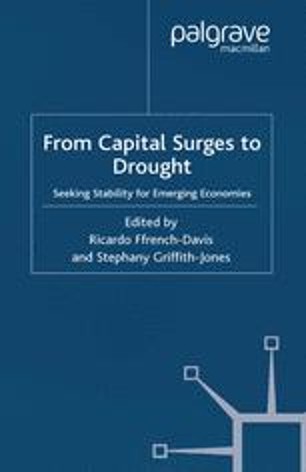Contents
The value of a good or service means the amount of other goods and services it can be exchanged for in the market. There is no common measure of value under barter system. But the result would be to add further to the growth of broad money. Broad money needs to grow, to boost liquidity in the short term before levelling off in years to come. Assertion Ratio of Broad money M3 to gross domestic product has increased in recent yearsReason The penetration of banking services has improved in India.Correct Answerboth right, R explains AQ2.
- The definitions of money vary by country but generally include at least a measure for narrow money and one for broad money.
- James Chen, CMT is an expert trader, investment adviser, and global market strategist.
- Weekly Packets are then sold to Cuban’s without internet access, allowing them to obtain information just days – and sometimes hours – after it …
- Under the last shah’s rule, Mehrangiz Dolatshahi, a …
• The ease at which money is converted into other goods and services is called “liquidity of money”. Add broad money to one of your lists below, or create a new one. Nevertheless, we will need broad money targets and to make the https://1investing.in/ best of them. The reality is that there is no stable relationship between broad money and total spending, even in the long run. The own-yield of money is a weighted average of the yields of various components of broad money.
More Money and Banking Questions
• Under barter economy there was no common measure of value in which the values of different goods could be measured and compared with each other. • Individuals can exchange their goods and services for money and then can use this money to buy other goods and services according to their needs and convenience. India’s deposits with IMF, World bank, Foreign Government etc. Every measurement has it own definition with different components varying from most liquid to most rigid form. Inflation is a decrease in the purchasing power of money, reflected in a general increase in the prices of goods and services in an economy. Full BioRobert Kelly is managing director of XTS Energy LLC, and has more than three decades of experience as a business executive.
In the United States, narrow money is classified as M1 (M0 + demand accounts). In the United Kingdom, the narrowest measure of money is notes and coins in circulation. The definitions of money vary by country but generally always include at least a measure for narrow money and one for broad money. The total amount of money circulating in an economy is called money supply, and its size is generally tracked and reported publicly by each country’s central bank or government. The definitions of money vary by country but generally include at least a measure for narrow money and one for broad money.

The principal indicators of monetary conditions are the rate of growth of both narrow and broad money, and the behaviour of the exchange rate. These measurements vary according to the liquidity of the accounts included. M0 typically includes only the most liquid instruments, such as coins and notes in circulation. At the other end of the scale is M3, which is categorized as the broadest measurement of money. The different measures used by central banks significantly affect the comparability of money across markets. M1 consists of currency in circulation, travelers’ checks of nonbank issuers, demand deposits, and other checkable deposits, e.g., negotiable order of withdrawal accounts at depository institutions.
Practical Definitions of Money
Broad money is used colloquially to refer to a broad definition of the money supply. These are considered ‘near money’ because it can easily be changed to cash. While M1/M0 are used to describe narrow money, M2/M3/M4 qualify as broad money and M4 represents the largest concept of the money supply. Broad money may include various deposit-based accounts that would take more than 24 hours to reach maturity and be considered accessible.
Economists use a capital letter “M” followed by a number to refer to the measurement they are using in a given context. Broad money can also include Treasury Bills and gilts. These financial securities are seen as ‘near money’ because they are more illiquid than cash and instant saving accounts.
What Is Broad Money?
This typically includes funds paid using either debit card transactions or a variety of checks. Narrow money is a subset of broad money that includes long-term deposits and other deposit-based accounts. Only a few central banks, such as the Bank of England, issue additional measures of money to help comparisons with other economies. Broad money includes all the items included in narrow money, but also any other liquid assets that can be used to buy goods and services.

Broad moneyis a measure of a country’s money supply. The term, which usually refers to M3, includes more than simply banknotes and coins. In other words, it means more than ‘narrow money.’ It is the most inclusive definition of the money supply.
Wireless technologies( Terms
Broad money is a category for measuring the amount of money circulating in an economy. There is no unique ‘correct’ measure of a country’s money supply. Economists have several measures which they roic meaning classify. Their classification runs along a spectrum between narrow and broad monetary aggregates. In other words, the money supply is not black and white, but rather different shades of gray.
- M3 includes all the items in M2, plus repurchase agreements, money market fund shares, money market paper, and debt securities issued with a maturity of fewer than two years.
- M0 consists of currency in circulation plus bankers’ deposits at the Bank of England.
- That is bound to mean that the small proportion of the overall broad money figure that represents notes and coins increases.
- These measurements vary according to the liquidity of the accounts included.
- In those situations money acts as a standard of deferred payments.
- Where, Other deposits are the deposits held by the RBI of all economic units except the government and banks.
M4 growth—broad money—has fallen steadily throughout 1990 and currently stands at its lowest point for nearly three and a half years. A tighter broad money policy between 1974 and 1975 led to much lower inflation in 1976–78. Broad money as well as narrow money, which has remained above its target range for some time, are two of the items that one considers. The 12-month rate of growth in broad money in the United States rose to 9.0% in July, but slowed to 5.9% in Sweden. M4 has variety of “TIME DEPOSITS” so you can visualize it takes time to “BREAK” those deposits and takeout cash.
On the other hand, the Reserve Money comprises required reserves along with the excess reserves of the banking system. If the foreseen reserve requirement increases, the value of Reserve Money will increase and bring a fall in the multiplier. Likewise, if banks also increase the money in their reserves, it will affect the multiplier adversely.
He has produced multimedia content that has garnered billions of views worldwide. Daniel Liberto is a journalist with over 10 years of experience working with publications such as the Financial Times, The Independent, and Investors Chronicle. He received his masters in journalism from the London College of Communication. Daniel is an expert in corporate finance and equity investing as well as podcast and video production.
According to the Bank of England, in the UK, broad money refers to the M4 money supply. Monetary-policy actions generally affect and control narrow money more than broader measures. M2 is a measure of the money supply that includes cash and checking deposits as well as near money. The money supply is the entire stock of currency and other liquid instruments in a country’s economy as of a particular time. Economists have found close links between money supply, inflation and interest rates.